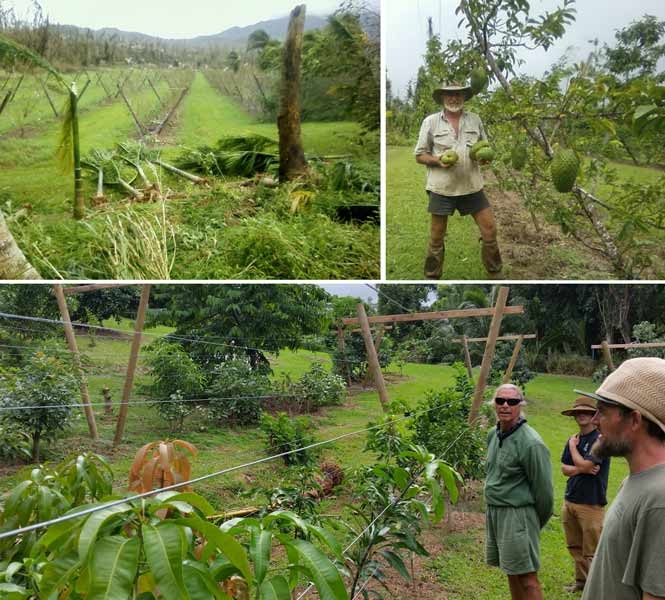Tatura Trellis - More than a tree training system. It has been reported from the USA that V-systems are most useful where strong winds are a problem.
Tatura Trellis for cyclone-prone growing regions (Continued from last issue)
We can also report that a Tatura Trellis planting with tropical fruits in North Queensland withstood cyclonic winds of 320 km/h and promises to be the solution to establishing a sustainable and prosperous industry of exotic tropical fruits in cyclone-prone north Queensland—and perhaps other parts of tropical Australia, Asia and the Pacific.
Global legacy of the Tatura Trellis
Fifteen months after the initial Tatura Trellis with peach trees was established in 1973 at the Horticultural Research Station, an unprecedented local, national and international media coverage followed.
“Hopes high for tree research”, “V shape could be growers’ life saver”, “Revolution for peach industry”, “The big V money saver”, “Boffins give new hope to fruit men”, were a few of the headings in newspapers advocating the aims of the experiment.
In 1975, after publication in the Victorian Horticulture Digest of “The Tatura Trellis: will it revolutionise fruit growing”—which included the first experimental peach yield results—there was a steady flow of local, interstate and overseas fruit growers and industry people wanting to see this ‘strange’ orchard with A and V steel frames that produced (depending on tree density) between 34 and 60 t/ha of Golden Queen peaches when two years old. Conventionally-planted peach trees would not crop until four years old.
Commercial Tatura Trellis orchards
The news had already reached South Africa, when Rhodes Fruits Farms Ltd in Groot Drakenstein, Cape Province, planted 12 hectares of canning peach trees in 1975, the first commercial Tatura Trellis orchard.
Between 1976 and 1979 a number of orchardists became sufficiently interested in the Tatura Trellis system to establish trial plantings in different localities in Australia (seven plantings), South Africa (three plantings), and New Zealand (one planting).
Peach trees were budded or propagated from hardwood cuttings in 1975 and planted out as rooted cuttings or kept in a nursery for one year. The size of the plantings ranged from 0.14 to 1.69 ha.
These developments provided an opportunity to study the Tatura Trellis that had been maintained without the detailed care often afforded to experiments.
It was of great significance when the Chairmen of Directors of the SPC and Ardmona canneries, who were not only influential fruit growers, but also major players in the canning fruit industry, joined the core group of pioneers in 1976 when they established a total of 2.5 ha of peach trees on Tatura Trellis.
Close contact was kept with as many commercial Tatura Trellis orchards as possible in Australia and overseas.
Accelerated adoption of Tatura Trellis (cont next month)
See this article in Tree Fruit Dec 2019






















